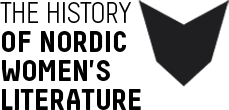How come a daughter of the liberal, albeit conservative ultra-respectable professor and hofmedicus (court physician) Carl Henrik Horn Nebelong was fooling about like a bohemian in Copenhagen cafés with her female friends and aspiring writers, and also writing audacious novels about the straitened circumstances of women’s desire in petit-bourgeois and double-standards patriarchal Denmark?
Tag: Short Stories
The bohemian authors aspired to a sense of life and art that could break open the boundaries both for oppressive bourgeois respectability and fatuous modernity. This applied to the women of the bohemia as well. But for them, freedom and liberation were not synonymous with the feminists’ demand for the right to vote, but a question of self-realisation in love and art.If the male figure-heads of the bohemian milieu caused scandal, the women did too – and to no less a degree. As bohemians they offended against every norm of what constituted a decent life for a woman as wife, as mother, as the heart and mind of the home. At the same time, it was for this femininity that they were fetishised in the bohemian milieu.
New Faroese Women’s Literature
The few Icelandic women writers to appear around the turn of the twentieth century travel from the countryside to Reykjavík. But it is not contemporary Iceland that frames, in their literary works, their depiction of Icelandic women’s struggles of the modern age.They choose the past as a time frame, the journey back to the patriarchal farming community from which the contemporary identity conflicts and attempted exoduses spring. From this perspective, they thematise the conflicts between duty and freedom and the ambivalence concerning women’s new liberation.
Gender and Class in Icelandic Women’s Literature of the 1970s
Icelandic writer Svava Jakobsdóttir’s fantastical narratives are witty, their humour and irony emerging not least from their intertextual dialogues. The Bible acts as something of an internal text within her entire oeuvre, but she also refers to world literature, myths, adventures, and women’s magazines. Her epic texts are at their most gruesome and grotesque when she tackles traditional clichés and stock phrases, which people use without thinking: ‘sacrificing oneself’, ‘giving someone a hand’.Svava Jakobsdóttir’s oeuvre is often divided into two parts, the realistic and the fantastical, and it is the fantastical stories that have attracted the most attention. This division, however, is a simplification of Svava Jakobsdóttir’s radical project. She has, in fact, never rejected the realistic art of storytelling, or its social and political references.
Icelandic writer Ásta Sigurðardóttir had a fondness for self-presentation that took her contemporaries’ breath away. All her short stories reflect a tension between, on the one hand, the longing for normality, security, and bourgeois acceptance and, on the other hand, rebellion, a need for freedom, and a deep-seated rejection of bourgeois values.She loved to perform, but no-one else should write her roles for her. Journeying is a recurrent motif in Ásta Sigurðardóttir’s texts, and her characters are alone, in both a physical and an existential sense. Her late texts lack the intensity that characterised her first short stories. The pride, the self-assertion, the queenly arrogance are gone. The gaze is dull, self-hatred is dominant. There is no longer anything worth describing.
The far too rapid and crude modernisation and urbanisation of Iceland had psychological consequences and caused cultural upheavals. The Icelandic women writers of the period 1930-1965 attempted to analyse the processes they were exposed to, and attempted to trace connections back and forth in time in order to find a meaning in their strange daily lives.Many issues were discussed by women during those years, in a rejection of the post-war ideology of women as carers and housewives. There were also many small out-bursts of frustration and opposition to the arrogance and obvious misogyny of the male literary elite. But the arrogance and contempt nevertheless had an effect, and the younger women’s literature of the 1950s and 1960s is often characterised by caution, distance, and self-censorship. Ambitious debuts were few and far between, and the women’s novels became in general shorter, sparer – every single word was carefully weighed.The short stories of Unnur Eiríksdóttir, Drífa Viðar, and Ásta Sigurðardóttir are all marked by linguistic self-awareness, formal inventions, and absurd or grotesque touches. Modernism was emerging, and it was the young urban women who prepared the way for it.
The Icelandic author Unnur Benediktsdóttir Bjarklind chose the pseudonym Hulda, which means the subterranean, the hidden. In her early works, a battle is being fought in the young female artist’s soul between, on the one hand, the expectations of duty and family, and, on the other, the dreams and desires of the girl. In her later poems and short stories, motherhood is viewed as incompatible with freedom, art, and even true love.Hulda often draws on Norse mythology when she wishes to express conflicts between the desire for freedom and the need for security. In her first three poetry collections, she experimented with the form. Inspired by symbolist poetry, she prioritised rhythm and sonority over traditional prosody. She held on to alliteration, but varied the rhymes and the lengths of the stanzas. She became one of the pioneers of prose poetry within Icelandic literature.
From Rhymes to Reforms in Iceland

